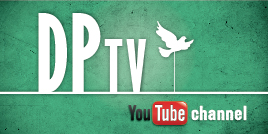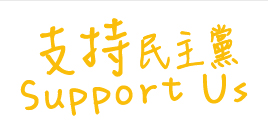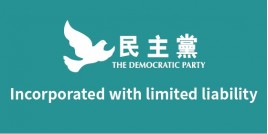1. 根據《與貿易有關的知識產權協議》(TRIP / Trade Related Aspects of Intellectual Property Rights)第31條,在面臨國家危急狀況或其他極度緊急的情況,簽署國或其授權人可在沒有得到專利權前使用專利物品,但必須盡快通知專利權所有人。
2. 根據香港法例第514章《專利條例》第68條,在極度緊急時期,當行政長官會同行政會議於認為為公眾利益而有必要或適宜時,可藉規例宣布任何時期為極度緊 急時期,以維持社會大眾生活上必需的供應品與服務,確保社會大眾有足夠的生活所必需的供應品與服務。期間行政長官授權的公職人員,或公職人員授權的其他 人,可以在沒有專利所有人的同意下,在香港作出任何對緊急情況而言是適宜的行為。
3. 現時羅氏已停止供應藥物給本港的私家醫生。此外,據報特敏福的生產過程需經10个步驟、一年時間,等到出現人傳人流感時,才不理專利權,生產或入口仿特敏福的藥物,一定趕不及。所以政府有合理理由指出,目前本港已進入緊急情況。
4. 随着禽流感疫情的不断擴大,很多國家纷纷呼籲羅氏公司放棄制造特敏福的專利權,讓世界各地自行生產,但羅氏一直拒绝。直至最近才表示願意給予其他有意生產特敏福的工廠部份授權或合作計劃。近日羅氏同意與四家美国制藥公司合作,共同生產,但細節仍不確定。
5. 民主黨建議:無論羅氏是自己制造,還是與其他美國國內、國外藥廠合作製藥,如果羅氏無法為本港的公營、私營醫療體系提供所需的特敏福,香港政府應尋求法律 意見,了解現在是否已適宜宣布進入緊急狀態,徵用特敏福的專利權。因為根據《與貿易有關的知識產權協議》(TRIP)第31條,及香港法例第514章《專利條例》第68條,在面對緊急狀況時,香港政府有權採取特別措施。此外,政府亦應聯絡其他宣稱已能生廠仿特敏福藥物的藥廠,了解其藥物生產、質素及供應情況。
Trade-Related Aspects of Intellectual Property Rights Part II — Standards concerning the availability, scope and use of Intellectual Property Rights Article 27 Patentable Subject Matter 1. Subject to the provisions of paragraphs 2 and 3, patents shall be available for any inventions, whether products or processes, in all fields of technology, provided that they are new, involve an inventive step and are capable of industrial application. (5) Subject to paragraph 4 of Article 65, paragraph 8 of Article 70 and paragraph 3 of this Article, patents shall be available and patent rights enjoyable without discrimination as to the place of invention, the field of technology and whether products are imported or locally produced.
2. Members may exclude from patentability inventions, the prevention within their territory of the commercial exploitation of which is necessary to protect ordre public or morality, including to protect human, animal or plant life or health or to avoid serious prejudice to the environment, provided that such exclusion is not made merely because the exploitation is prohibited by their law.
3. Members may also exclude from patentability: (a) diagnostic, therapeutic and surgical methods for the treatment of humans or animals; (b) plants and animals other than micro-organisms, and essentially biological processes for the production of plants or animals other than non-biological and microbiological processes. However, Members shall provide for the protection of plant varieties either by patents or by an effective sui generis system or by any combination thereof. The provisions of this subparagraph shall be reviewed four years after the date of entry into force of the WTO Agreement. Article 28 Rights Conferred 1. A patent shall confer on its owner the following exclusive rights: (a) where the subject matter of a patent is a product, to prevent third parties not having the owner’s consent from the acts of: making, using, offering for sale, selling, or importing (6) for these purposes that product; (b) where the subject matter of a patent is a process, to prevent third parties not having the owner’s consent from the act of using the process, and from the acts of: using, offering for sale, selling, or importing for these purposes at least the product obtained directly by that process.
2. Patent owners shall also have the right to assign, or transfer by succession, the patent and to conclude licensing contracts. Article 29 Conditions on Patent Applicants 1. Members shall require that an applicant for a patent shall disclose the invention in a manner sufficiently clear and complete for the invention to be carried out by a person skilled in the art and may require the applicant to indicate the best mode for carrying out the invention known to the inventor at the filing date or, where priority is claimed, at the priority date of the application.
2. Members may require an applicant for a patent to provide information concerning the applicant’s corresponding foreign applications and grants. Article 30 Exceptions to Rights Conferred Members may provide limited exceptions to the exclusive rights conferred by a patent, provided that such exceptions do not unreasonably conflict with a normal exploitation of the patent and do not unreasonably prejudice the legitimate interests of the patent owner, taking account of the legitimate interests of third parties. Article 31 Other Use Without Authorization of the Right Holder Where the law of a Member allows for other use (7) of the subject matter of a patent without the authorization of the right holder, including use by the government or third parties authorized by the government, the following provisions shall be respected:
(a) authorization of such use shall be considered on its individual merits;
(b) such use may only be permitted if, prior to such use, the proposed user has made efforts to obtain authorization from the right holder on reasonable commercial terms and conditions and that such efforts have not been successful within a reasonable period of time. This requirement may be waived by a Member in the case of a national emergency or other circumstances of extreme urgency or in cases of public non-commercial use. In situations of national emergency or other circumstances of extreme urgency, the right holder shall, nevertheless, be notified as soon as reasonably practicable. In the case of public non-commercial use, where the government or contractor, without making a patent search, knows or has demonstrable grounds to know that a valid patent is or will be used by or for the government, the right holder shall be informed promptly;
(c) the scope and duration of such use shall be limited to the purpose for which it was authorized, and in the case of semi-conductor technology shall only be for public non-commercial use or to remedy a practice determined after judicial or administrative process to be anti-competitive;
(d) such use shall be non-exclusive;
(e) such use shall be non-assignable, except with that part of the enterprise or goodwill which enjoys such use;
(f) any such use shall be authorized predominantly for the supply of the domestic market of the Member authorizing such use;
(g) authorization for such use shall be liable, subject to adequate protection of the legitimate interests of the persons so authorized, to be terminated if and when the circumstances which led to it cease to exist and are unlikely to recur. The competent authority shall have the authority to review, upon motivated request, the continued existence of these circumstances;
(h) the right holder shall be paid adequate remuneration in the circumstances of each case, taking into account the economic value of the authorization;
(i) the legal validity of any decision relating to the authorization of such use shall be subject to judicial review or other independent review by a distinct higher authority in that Member;
(j) any decision relating to the remuneration provided in respect of such use shall be subject to judicial review or other independent review by a distinct higher authority in that Member;
(k) Members are not obliged to apply the conditions set forth in subparagraphs (b) and (f) where such use is permitted to remedy a practice determined after judicial or administrative process to be anti-competitive. The need to correct anti-competitive practices may be taken into account in determining the amount of remuneration in such cases. Competent authorities shall have the authority to refuse termination of authorization if and when the conditions which led to such authorization are likely to recur;
(l) where such use is authorized to permit the exploitation of a patent (“the second patent”) which cannot be exploited without infringing another patent (“the first patent”), the following additional conditions shall apply: (i) the invention claimed in the second patent shall involve an important technical advance of considerable economic significance in relation to the invention claimed in the first patent; (ii) the owner of the first patent shall be entitled to a cross-licence on reasonable terms to use the invention claimed in the second patent; and (iii) the use authorized in respect of the first patent shall be non-assignable except with the assignment of the second patent. Article 32 Revocation/Forfeiture An opportunity for judicial review of any decision to revoke or forfeit a patent shall be available. Article 33 Term of Protection The term of protection available shall not end before the expiration of a period of twenty years counted from the filing date (8) Article 34 Process Patents: Burden of Proof 1. For the purposes of civil proceedings in respect of the infringement of the rights of the owner referred to in paragraph 1(b) of Article 28, if the subject matter of a patent is a process for obtaining a product, the judicial authorities shall have the authority to order the defendant to prove that the process to obtain an identical product is different from the patented process.
Therefore, Members shall provide, in at least one of the following circumstances, that any identical product when produced without the consent of the patent owner shall, in the absence of proof to the contrary, be deemed to have been obtained by the patented process: (a) if the product obtained by the patented process is new; (b) if there is a substantial likelihood that the identical product was made by the process and the owner of the patent has been unable through reasonable efforts to determine the process actually used. 2. Any Member shall be free to provide that the burden of proof indicated in paragraph 1 shall be on the alleged infringer only if the condition referred to in subparagraph (a) is fulfilled or only if the condition referred to in subparagraph (b) is fulfilled. 3. In the adduction of proof to the contrary, the legitimate interests of defendants in protecting their manufacturing and business secrets shall be taken into account. Section 6: layout-designs (topographies) of integrated circuits back to top Article 35 Relation to the IPIC Treaty Members agree to provide protection to the layout-designs (topographies) of integrated circuits (referred to in this Agreement as “layout-designs”) in accordance with Articles 2 through 7 (other than paragraph 3 of Article 6), Article 12 and paragraph 3 of Article 16 of the Treaty on Intellectual Property in Respect of Integrated Circuits and, in addition, to comply with the following provisions. Article 36 Scope of the Protection Subject to the provisions of paragraph 1 of Article 37, Members shall consider unlawful the following acts if performed without the authorization of the right holder: (9) importing, selling, or otherwise distributing for commercial purposes a protected layout-design, an integrated circuit in which a protected layout-design is incorporated, or an article incorporating such an integrated circuit only in so far as it continues to contain an unlawfully reproduced layout-design. Article 37 Acts Not Requiring the Authorization of the Right Holder 1. Notwithstanding Article 36, no Member shall consider unlawful the performance of any of the acts referred to in that Article in respect of an integrated circuit incorporating an unlawfully reproduced layout-design or any article incorporating such an integrated circuit where the person performing or ordering such acts did not know and had no reasonable ground to know, when acquiring the integrated circuit or article incorporating such an integrated circuit, that it incorporated an unlawfully reproduced layout-design. Members shall provide that, after the time that such person has received sufficient notice that the layout-design was unlawfully reproduced, that person may perform any of the acts with respect to the stock on hand or ordered before such time, but shall be liable to pay to the right holder a sum equivalent to a reasonable royalty such as would be payable under a freely negotiated licence in respect of such a layout-design.
2. The conditions set out in subparagraphs (a) through (k) of Article 31 shall apply mutatis mutandis in the event of any non-voluntary licensing of a layout-design or of its use by or for the government without the authorization of the right holder. Article 38 Term of Protection 1. In Members requiring registration as a condition of protection, the term of protection of layout-designs shall not end before the expiration of a period of 10 years counted from the date of filing an application for registration or from the first commercial exploitation wherever in the world it occurs. 2. In Members not requiring registration as a condition for protection, layout-designs shall be protected for a term of no less than 10 years from the date of the first commercial exploitation wherever in the world it occurs. 3. Notwithstanding paragraphs 1 and 2, a Member may provide that protection shall lapse 15 years after the creation of the layout-design.
醫療政策發言人 鄭家富




